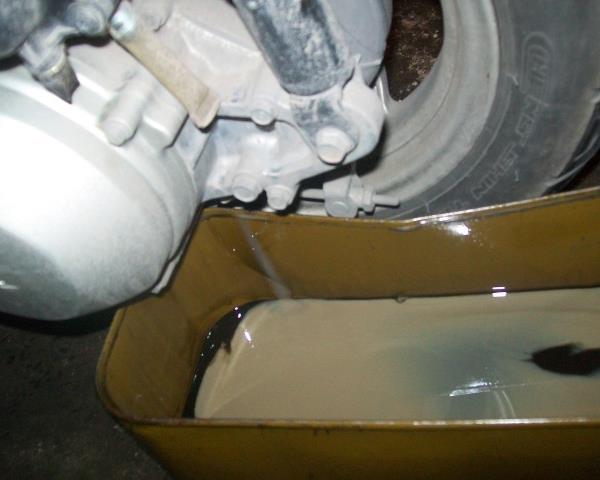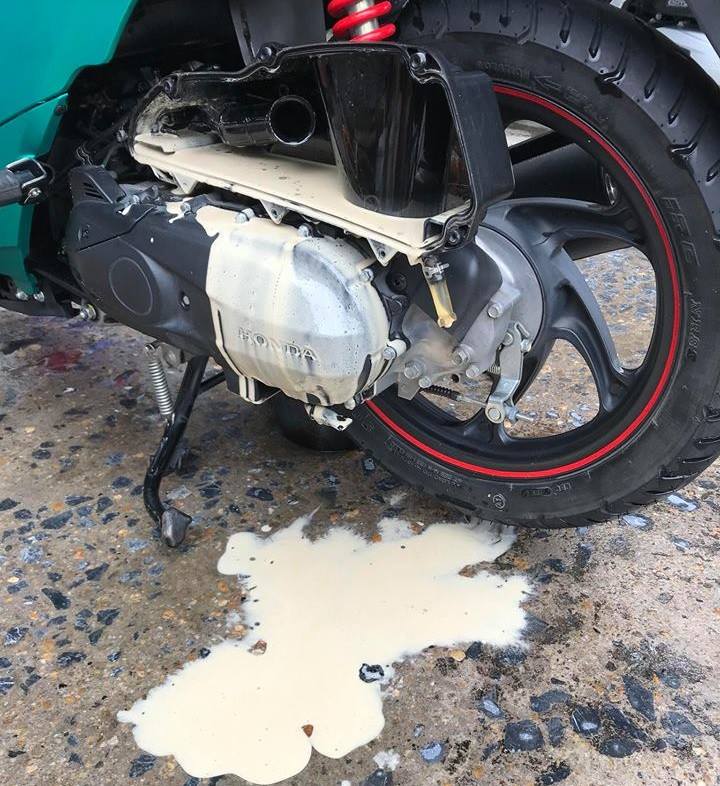Using a scooter to wade through water, whether it stalls or not, can still have an impact on the vehicle. Therefore, it is necessary to carefully check and maintain essential components such as the clutch, engine, or air filter after passing through flooded areas.
Every vehicle is designed for a specific purpose, and not all types of vehicles can navigate through water, especially scooters. However, many people remain complacent about their scooters during recent floods. As a result, numerous scooters experienced engine damage when riders attempted to use them on flooded roads.
Misconceptions about water levels and potential damages
Some individuals mistakenly believe that as long as the water level is below the exhaust pipe, the scooter can navigate smoothly. However, the real danger lies in water entering the air filter, the intake port, and the scooter’s body.
Unlike manual scooters, automatic scooters have the air filter located relatively low, and the scooter body is positioned right above the rear axle. Both these components are highly susceptible to water ingress, especially when there’s interference from other vehicles, creating waves that directly impact the scooter and these two parts.
Potential consequences of using scooters in water
Water entering the scooter body
The scooter’s body, being the lowest part, is almost guaranteed to allow water to enter through the vent tube, leading to damaged oil seals, loss of lubrication capabilities, reduced heat dissipation, resulting in deteriorated water-resistant seals and direct impact on the internal gears.

Being negligent about hygiene and not changing the body oil after water immersion can lead to issues such as shaky bodies, bearing wear, or even body cracks. Additionally, the body requires a specific type of oil, and using engine oil instead can lead to viscosity differences.
Water entering the air filter
The most dangerous situation is when water enters the air filter or the intake port. The air filter is where air is sucked in, mixed with sprayed fuel, and then enters the combustion chamber. If water enters the air filter or the intake port, there is a high likelihood that water will mix with the fuel, entering the combustion chamber. While gasoline can burn, water cannot, causing hydro-locking when the vehicle is in operation.
Hydro-locking can lead to complete damage to vital engine parts, such as connecting rods, pistons, the valve system, and the cylinder head. These are all essential components of the engine.
This doesn’t even take into account water entering the CVT gearbox. When water mixes with oil, depending on the water content, the oil can change color, from light brown to milky white. These signs indicate that water has entered the gearbox, mixing with the engine oil. Ignoring this issue can lead to total engine failure.

Water entering the CVT gearbox, mixing with oil, causes the oil to turn milky white
Maintenance and recovery after using scooters in water
After using a scooter in water, especially in areas with high water levels, whether the scooter stalls or not, users must drain the body and engine oil to check for water ingress. Clean and blow-dry the air filter to prevent water from entering the combustion chamber.
In cases where water has entered the above components, thorough cleaning is necessary, ensuring there is no standing water. Rinse all parts by draining and changing the oil about 2 to 3 times, then refill with new oil. Subsequent oil changes should be done more frequently to ensure that all components are consistently refreshed and lubricated.
For scooters that have suffered hydro-locking, the cost, time, and effort required for recovery can be considerable.
It is hoped that with this article, scooter users will have a more accurate understanding of using scooters in water and the importance of scooter maintenance when navigating through water, or even when pushing the scooter through flooded areas.












